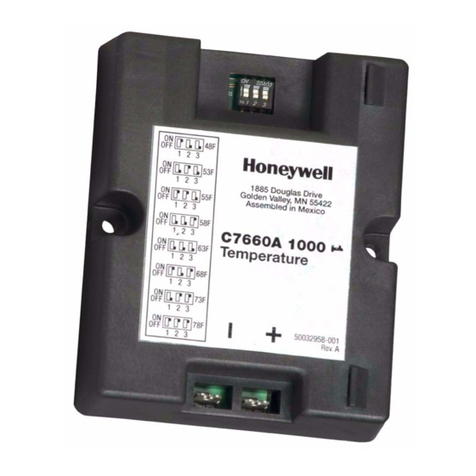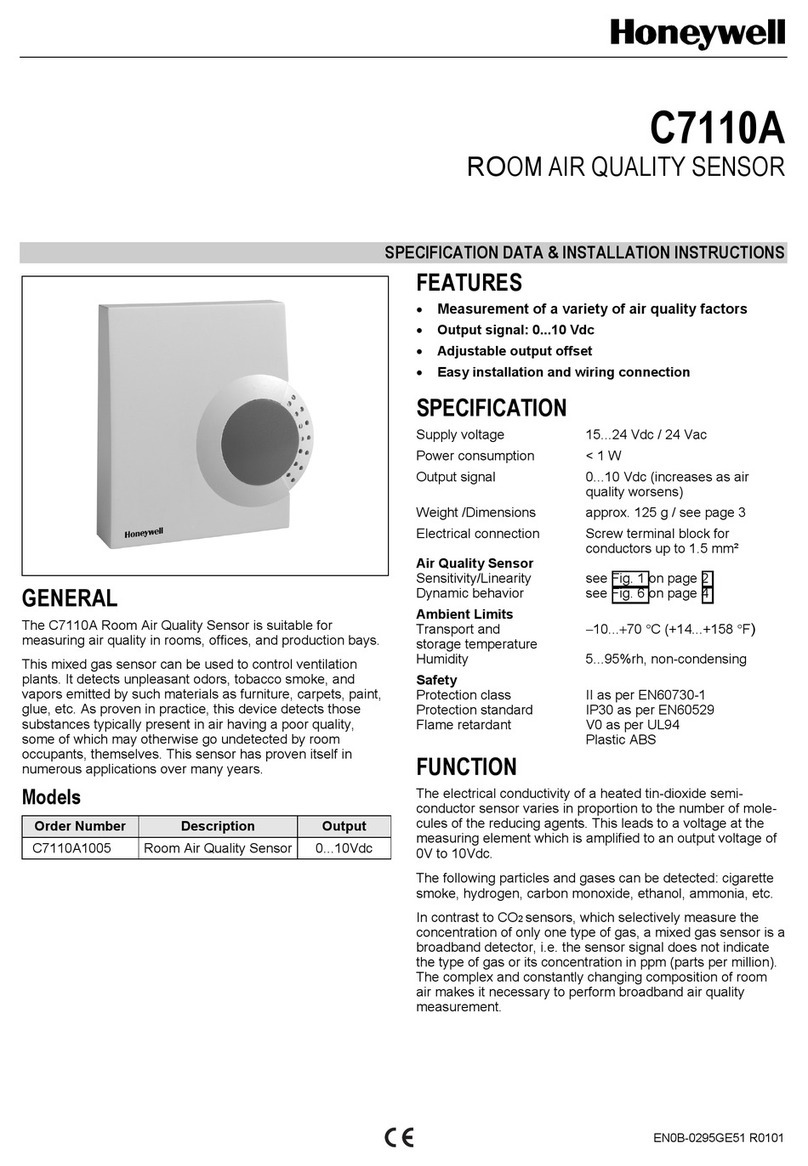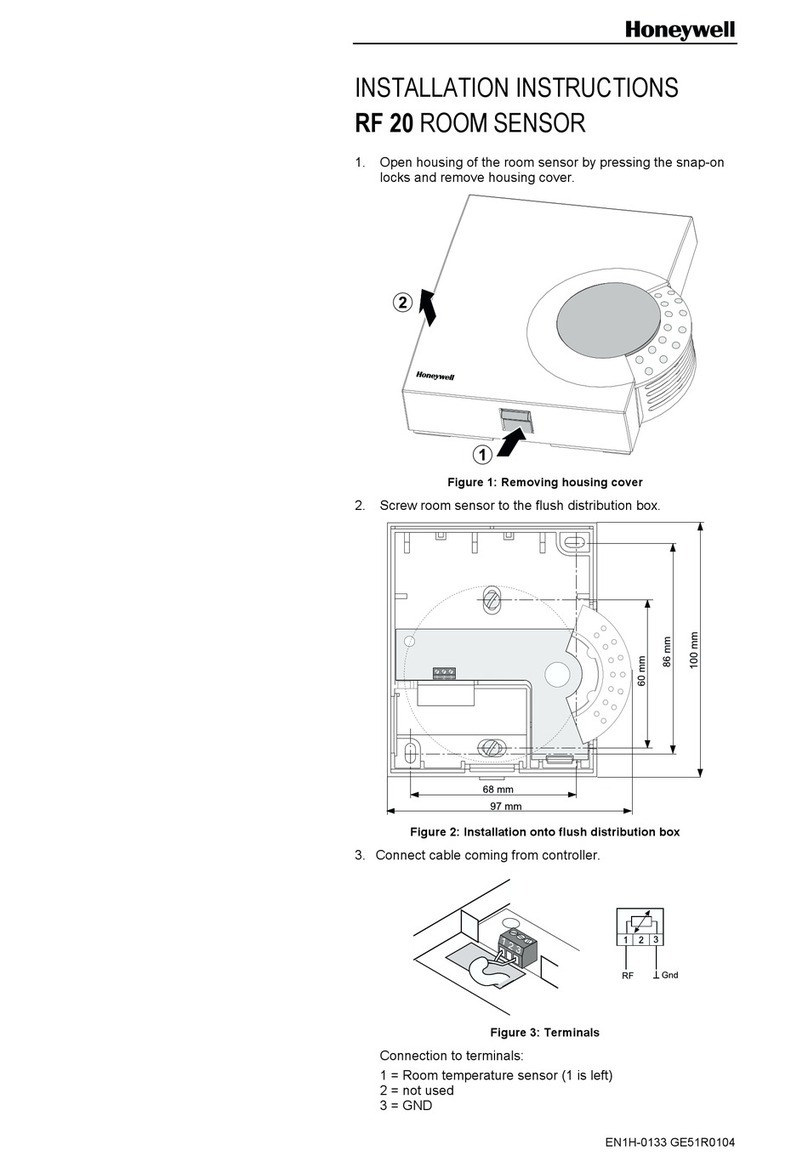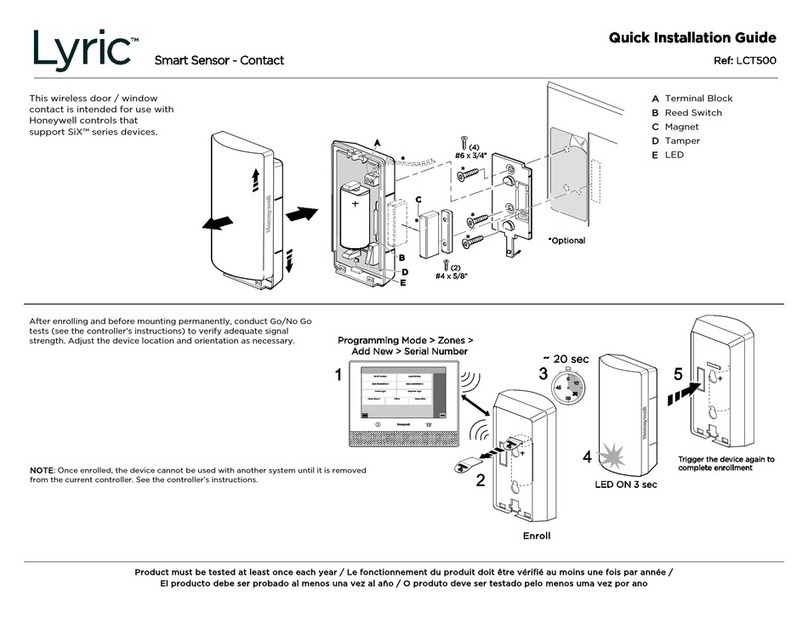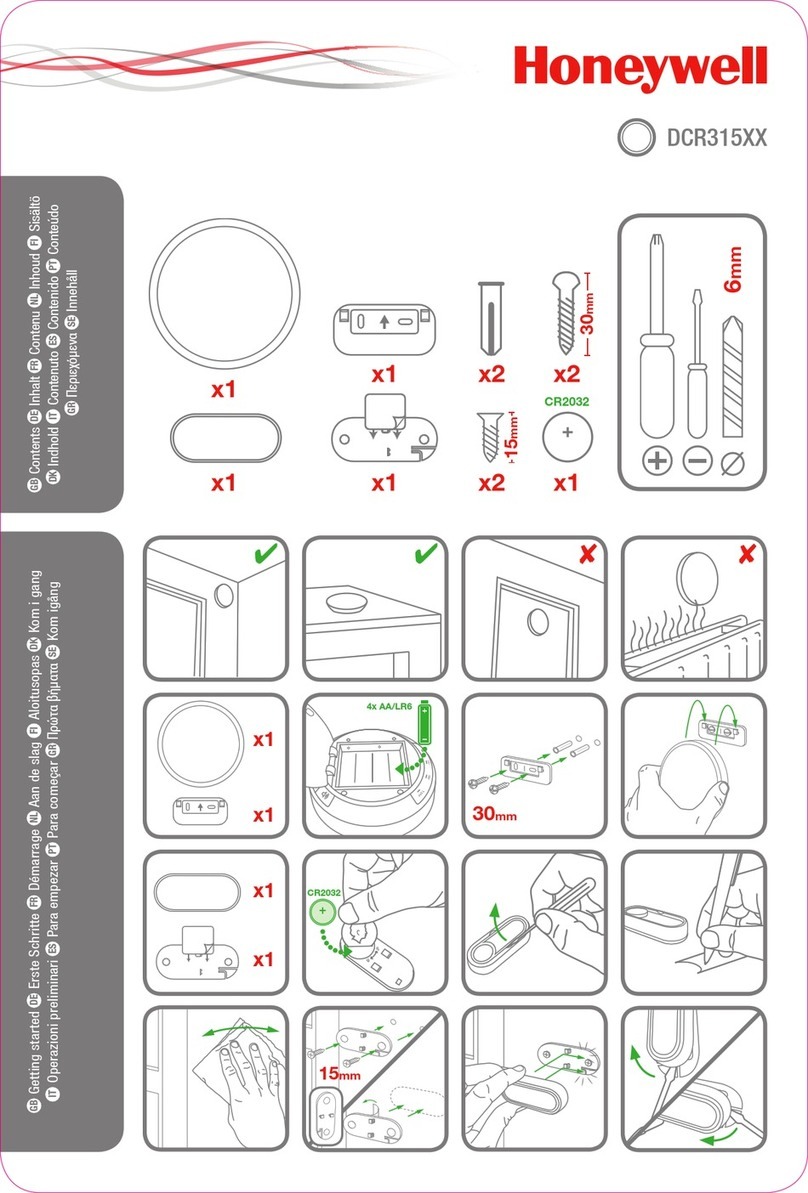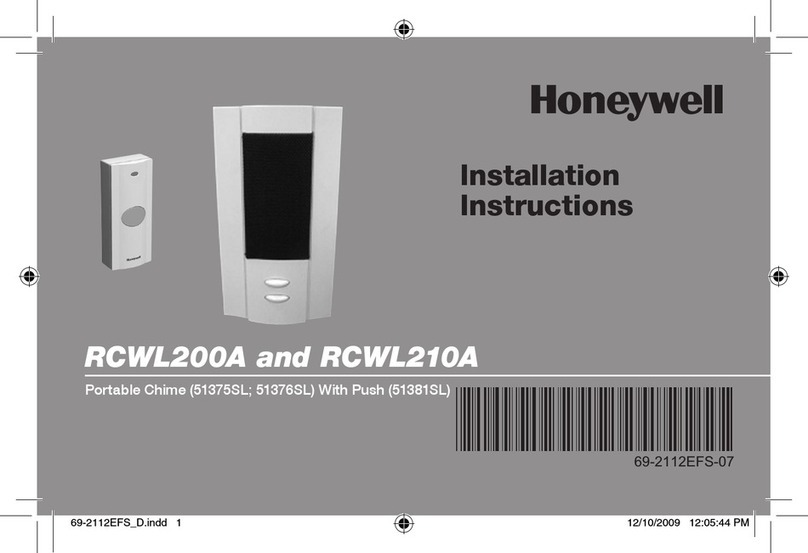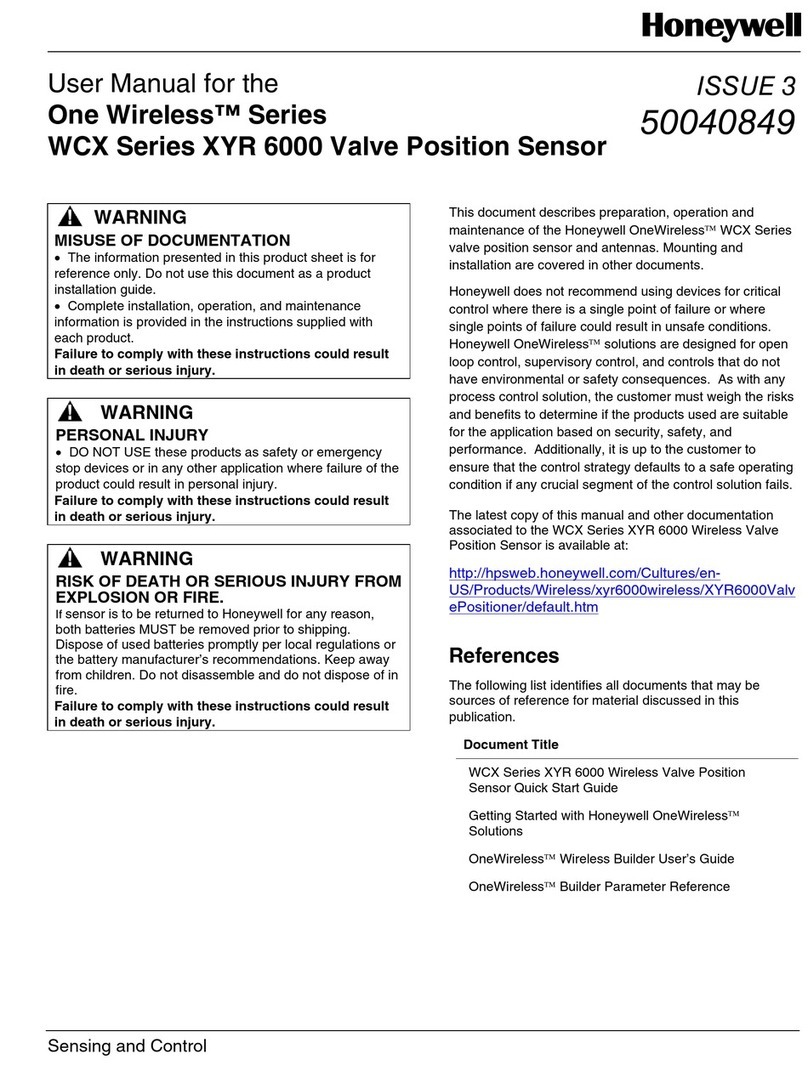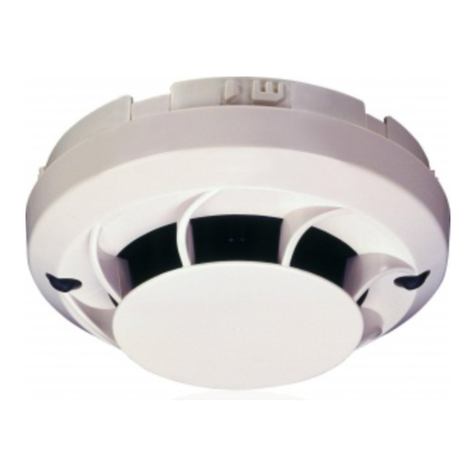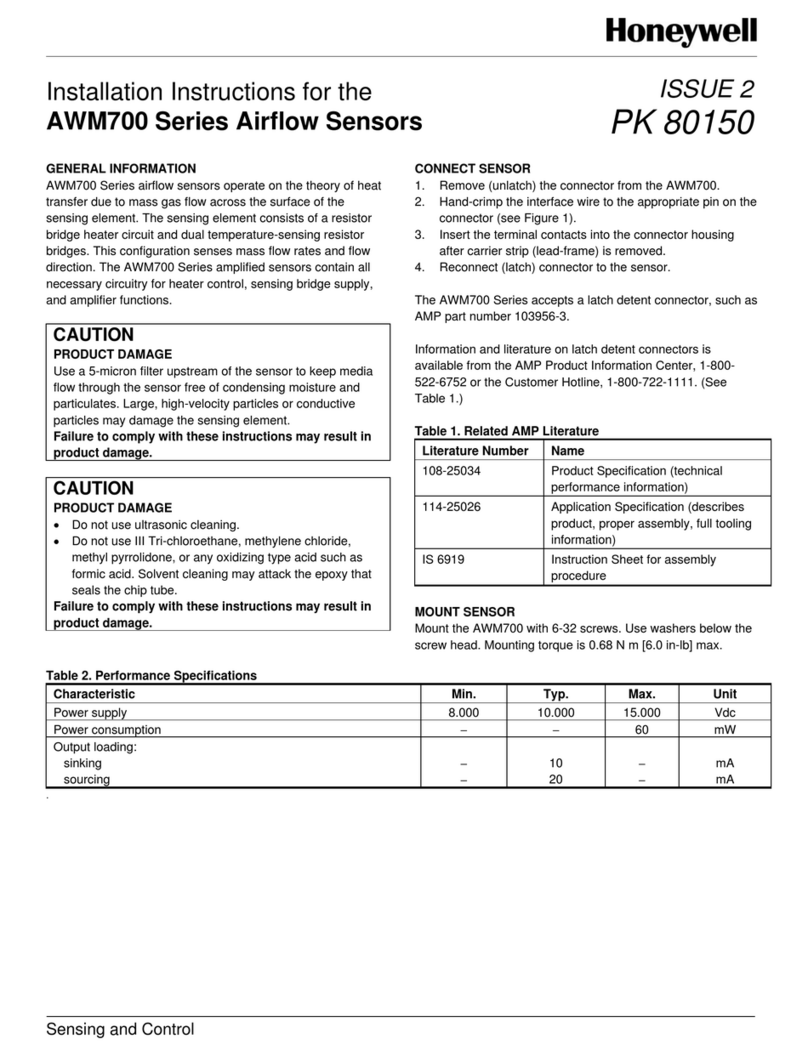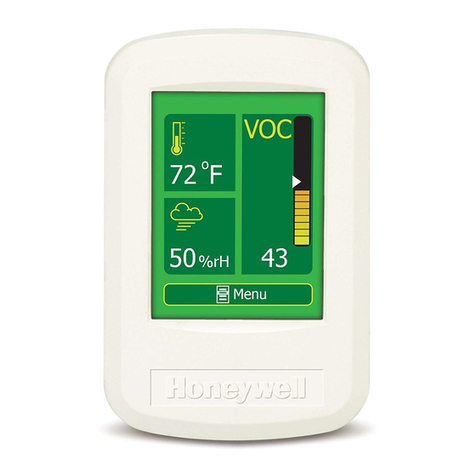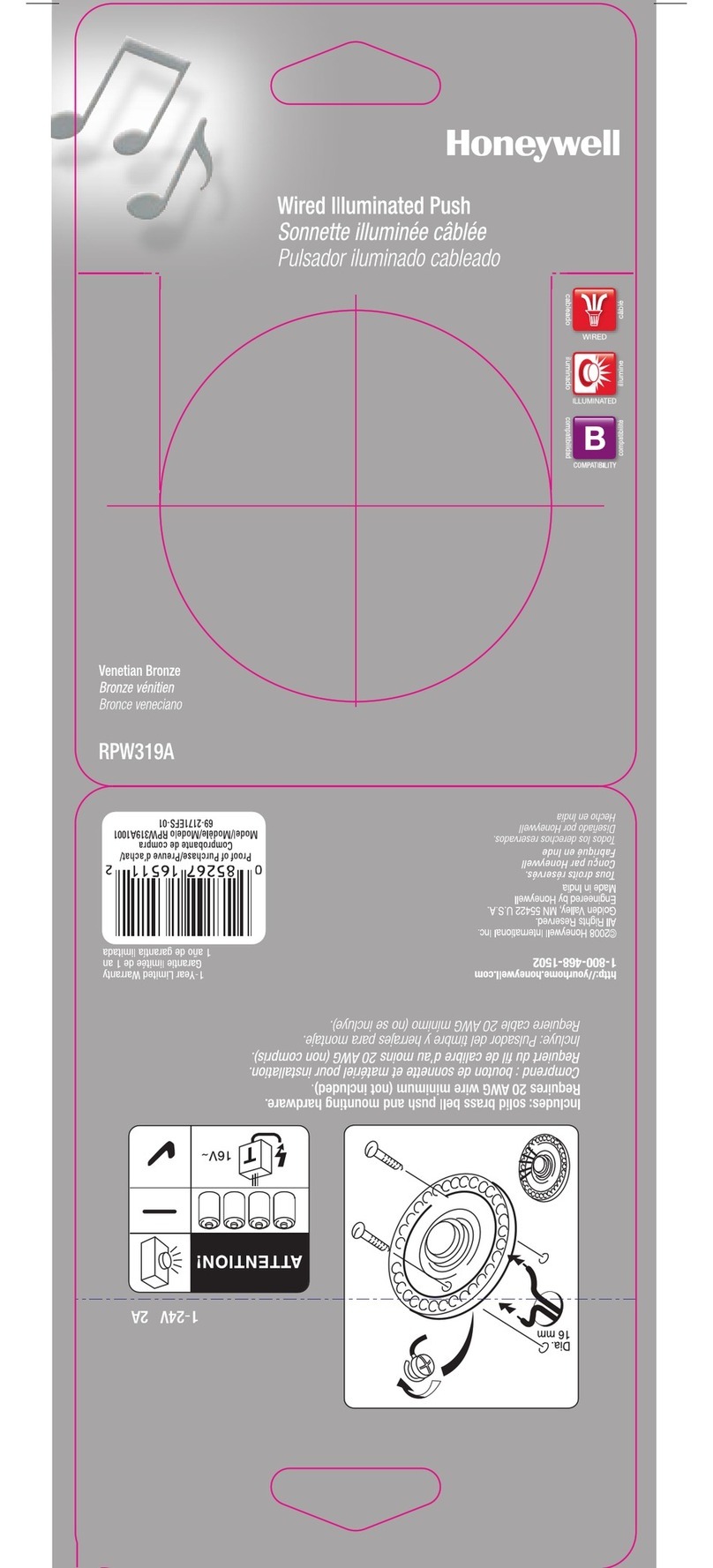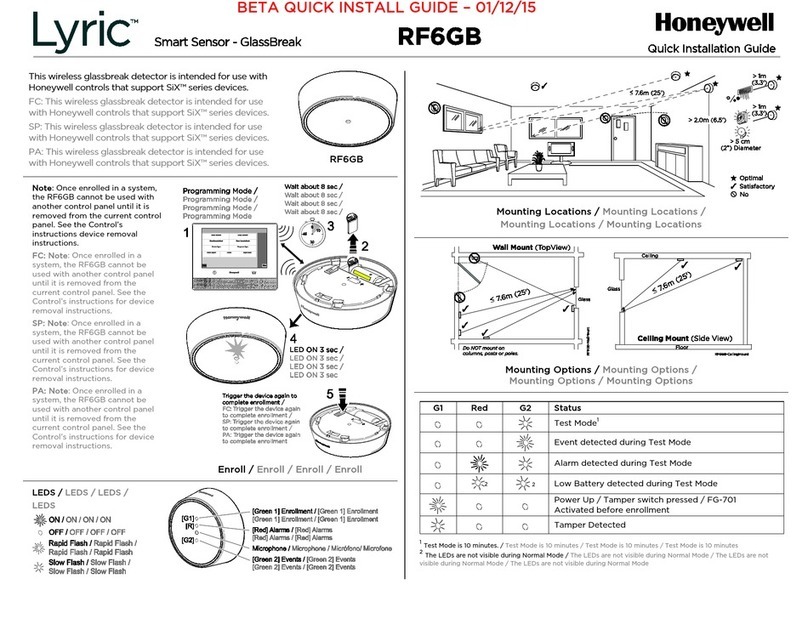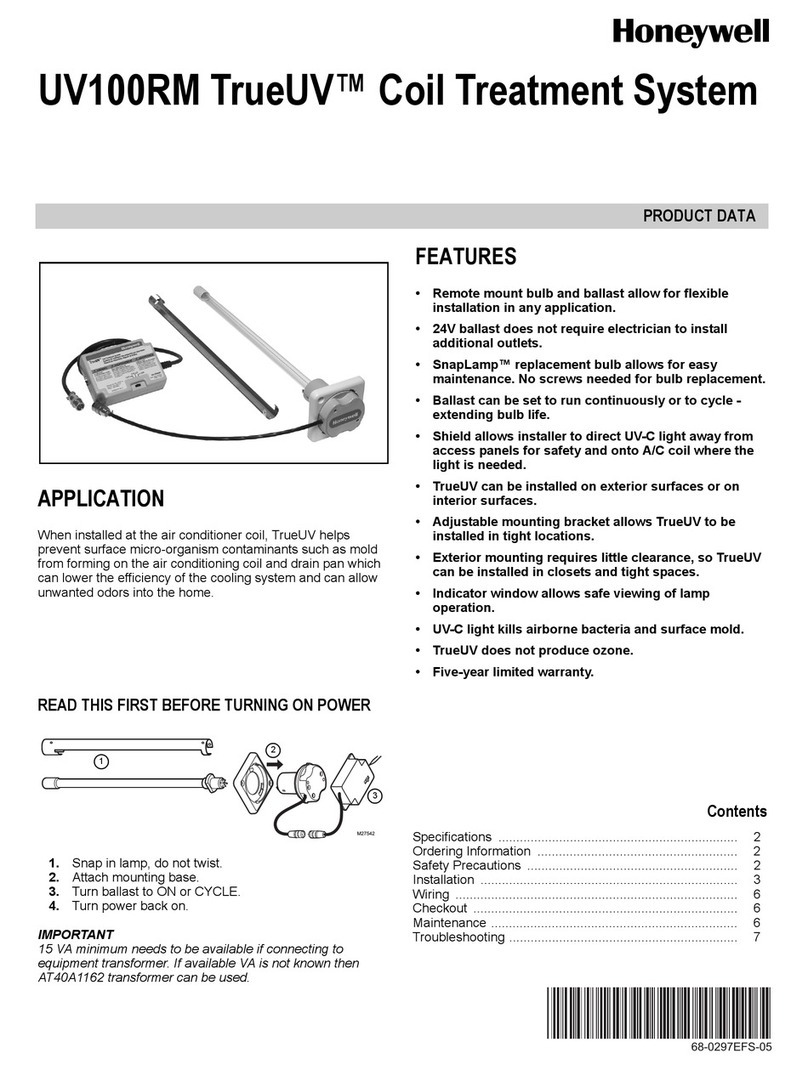1. Présentation
Le détecteur CAMIR volumétrique à système de prise de vue intégré,
utilise la technologie infrarouge passif. Il fait partie de la gamme de
périphériques radio utilisés avec les centrales d’alarme Domonial
800++.
Instructions spécifiques pour l’immunité aux petits
animaux
Pour tirer pleinement avantage de l’immunité aux petits animaux, suivre
le guide de montage ci-dessous :
• Configurer le détecteur en basse ou très basse sensibilité.
• En très basse sensibilité, le poids total des animaux ne doit pas
dépasser 36 kg (80 lb).
• En basse sensibilité, le poids total des animaux ne doit pas dépasser
18 kg (40 lb).
• Monter le détecteur dans un endroit où les animaux domestiques ne
peuvent pas s’approcher de plus de 1,80 m (6 pieds) du détecteur en
grimpant sur des meubles, des boîtes ou d’autres objets.
• Ne pas orienter le détecteur vers des escaliers ou des
meubles/objets sur lesquels les animaux peuvent grimper.
• Les différences environnementales et la chaleur dégagée
par l’animal font varier les degrés d’immunité aux animaux
du détecteur.
Le détecteur doit avoir une vue sans obstacle de la zone à protéger (cf
figure 1 pour en savoir plus sur les emplacements de montage).
Chaque installation doit être testée de façon à déterminer
avec exactitude le degré d’immunité a animaux atteignable.
2. Montage
Au
t
op
r
o
t
e
c
t
i
on
Le détecteur CAMIR est équipé d’un contact d’auto-protection
à l’ouverture. Ce contact s’ouvre lorsque le capot est ouvert.
Deux contacts d’auto-protection à l’arrachement du mur sont également
présent :
• Opérationnel quand le produit est installé à plat sur le mur.
• Opérationnel d’un coté quand le produit est installé en angle
(cf figure 4).
Instructions de Montage
• À l’aide d’un petit tournevis, appuyer sur le taquet du boîtier situé en
bas du détecteur et retirer doucement le panneau avant en le
soulevant.
• Enlever la languette des piles pour mettre le détecteur sous tension,
en maintenant les piles. Vous pouvez enregistrer le detecteur
immédiatement ou plus tard.
• Monter le boîtier arrière contre un mur ou en angle en utilisant des
vis placées dans les trous prévus à cet effet (cf figure 4).
3. Fonctionnement de la LED
Utiliser l’outil de configuration pour activer la LED (cf figure 5).
4. Enregistrement
Enregistrement sur une centrale
D
omon
i
a
l
L’enregistrement est la procédure permettant d’associer le détecteur à
la centrale d’alarme. Il peut être éffectué au moment de la mise sous
tension du détecteur ou plus tard. Cette opération nécessite un outil de
programmation installé sur un PC, ou le clavier TCU. La procédure
complète est décrite dans les manuels d’utilisation de ces outils.
• Connecter l’outil de programmation à la centrale d’alarme et activer
le mode de programmation.
• Sélectionner l’option Ajouter un nouveau périphérique.
• Enlever la languette des piles ou déclancher l’autoprotection du
détecteur en ouvrant puis en refermant le capot.
Un message de confirmation s’affiche au bout de quelques secondes,
indiquant l’enregistrement du détecteur au niveau de la centrale
d’alarme, de même que le niveau du signal radio et le numéro de
série de l’appareil.
• Choisir le mode de fonctionnement, le label, etc.
Avertissement : lors de son enregistrement, le détecteur doit
toujours être dans sa position définitive, avec un niveau radio
minimum de 4/10.
5. Configuration
La configuration du détecteur CAMIR s’effectue à l’aide d’un outil de
programmation (PC, clavier TCU)
Il est possible de configurer les éléments suivants :
• LED et
• Sensibilité PIR
Définition de la sensibilité et test du
d
é
t
e
c
t
e
u
r
Ajuster la sensibilité requise par l’installation (voir les options ci- dessous).
Commencez le test de détection dès que la LED arrête de clignoter (voir la
section Fonctionnement de la LED).
Parcourer la/les zone(s) de détection tout en observant la LED
du détecteur. La LED indique la détection de mouvements et la
transmission d’une alarme.
La portée absolue d’un détecteur infrarouge peut fluctuer en fonction des
différents types de vêtements, du revêtement mural et de la température
ambiante. Pour ces raisons, bien vérifier que le chemin d’accès probable
d’un éventuel intrus passe bien largement à l’intérieur de la zone couverte,
et que des tests ont bien été réalisés tout au long de ce trajet.
Options de
s
e
n
s
i
b
ili
t
é
•Très basse sensibilité : 3 à 5 pas. Il s’agit du réglage recommandé
pour les applications avec des animaux domestiques dont le poids
est de < 36 kg
• Basse sensibilité : 2 à 4 pas. Il s’agit du réglage recommandé pour
les applications avec des animaux domestiques dont le poids est de
< 18 kg.
• Sensibilité moyenne : 1 à 3 pas.
• Haute Sensibilité. 1 à 2 pas. Il s’agit du réglage recommandé pour
un lieu dans lequel un intrus est supposé traverser une petite partie
de la zone de couverture seulement (conforme à la norme
EN50131).
Remarque : les distances indiquées pour les trajectoires de
détection illustrées ici sont fournies à titre indicatif uniquement
et ne représentent en aucun cas les distances de détection
m
a
x
i
m
a
l
e
s
.
6
.
Mode de
t
e
s
t
Après la période de chauffe (2 min 30 s.) et une fois le capot fermé
(fermeture de l’autoprotection), l’appareil se met en mode de test pendant
10 minutes. Ce test est obligatoire pour assurer le niveau de détection
attendu. Chaque détection déclenche l’envoi d’un signal d’alarme. Pour
relancer le test de 10 minutes, déclencher l’autoprotection. Vous pouvez
prendre des photos avec l’outil de programmation après fermeture de
l’autoprotection (pourvu qu’il n’y a pas de défaut pile) -
cf figure 7.
7
.
Défaut
p
il
e
Le détecteur signale un défaut pile à la centrale lorsque les piles sont
déchargées. Il dispose d’un mois d’autonomie après avoir transmis le
défaut.
Notez que si les piles sont faibles, la fonction photo du détecteur ne sera
pas opérationnelle.
Avertissement: Instructions de sécurité concernant le remplacement
et la manipulation des piles : Il y’a danger d’incendie, d’explosion et
de brulures lors d’un remplacement incorrect de la pile. Ne pas
recharger, démonter, chauffer au delà de 100°C ou incinérer la pile.
Lors du remplacement de la pile, faites attention à ce que la pile ne
soit pas endommagée et que les bornes de contact ne soient pas
courtcircuitées en enlevant la pile. Si la pile est endommagée, utiliser
des équipements de protection individuelle pour la retirer
immédiatement et la jeter de manière sure (suivant les
recommandations du fabricant de pile). Jeter les piles usagées selon
les instructions du fabricant et la réglementation en vigueur. En
Suisse, l’annexe 4.10 du SR 814.013 est applicable aux piles utilisées
dans ce produit.
Pour toute demande de renseignement, visiter le site Web Honeywell local.
- 3 -

